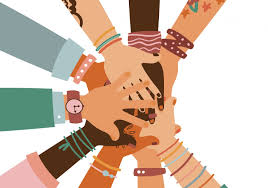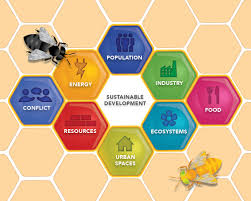The Significance of Cultural Diversity in a Globalized World
In today’s interconnected world, the importance of cultural diversity cannot be overstated. Cultures shape our identities, beliefs, and values, and they contribute to the rich tapestry of human experience. Embracing cultural diversity not only fosters understanding and tolerance but also promotes innovation and creativity.
One of the key benefits of cultural diversity is the opportunity for cross-cultural exchange. When individuals from different backgrounds come together, they bring unique perspectives and ideas to the table. This diversity of thought can lead to creative solutions to complex problems and spark new innovations in various fields.
Furthermore, exposure to different cultures can broaden our worldview and challenge our assumptions. By engaging with diverse cultures, we learn to appreciate the beauty of human differences and develop empathy for others’ experiences. This, in turn, can help break down barriers and promote social cohesion.
It is essential for societies to value and preserve their cultural heritage while also embracing the cultures of others. Cultural exchange can foster mutual respect and cooperation among nations, paving the way for a more peaceful and harmonious global community.
In conclusion, cultural diversity is not just a matter of tolerance; it is a source of strength and vitality for individuals and societies alike. By celebrating our differences and learning from one another, we can create a more inclusive world where every culture is valued and respected.
Understanding Cultural Concepts: Frequently Asked Questions
- What is a cultural example?
- What is the meaning of culturality?
- What is the other meaning of cultural?
- What is cultural in your own words?
- What is known as cultural?
What is a cultural example?
A cultural example can encompass a wide range of elements that reflect the values, traditions, beliefs, and practices of a particular group or society. This could include forms of art, music, literature, cuisine, rituals, ceremonies, language dialects, clothing styles, or even social norms and customs. For instance, traditional Japanese tea ceremonies showcase the importance of mindfulness and respect in Japanese culture. Cultural examples serve as tangible expressions of the intangible aspects that shape a community’s identity and offer insights into the diversity and richness of human experiences across different societies.
What is the meaning of culturality?
Culturality refers to the distinctive characteristics, beliefs, practices, and values that define a particular culture or group of people. It encompasses the shared traditions, customs, language, art, and social norms that shape the identity and behavior of individuals within a specific cultural context. Understanding culturality is essential for appreciating the diversity and complexity of human societies and for fostering cross-cultural communication and understanding. By recognizing and respecting the nuances of different cultures, we can promote inclusivity, empathy, and mutual respect in an increasingly interconnected world.
What is the other meaning of cultural?
Cultural, in addition to referring to the customs, beliefs, and practices of a particular group of people, can also denote the artistic and intellectual achievements of a society. This broader interpretation of cultural encompasses aspects such as literature, music, art, architecture, and other forms of creative expression that reflect the values and traditions of a community. Understanding cultural in this context highlights the significance of creativity and innovation in shaping the identity and heritage of a society.
What is cultural in your own words?
Culture encompasses the beliefs, customs, traditions, and values that define a group of people or society. It shapes how individuals perceive the world around them and influences their behaviors, interactions, and expressions. Cultural elements such as language, art, music, rituals, and social norms are passed down from generation to generation, creating a sense of identity and belonging. Culture is dynamic and ever-evolving, reflecting the diversity and complexity of human experiences across different regions and time periods. Embracing cultural diversity allows us to appreciate the richness of various traditions and perspectives while fostering mutual understanding and respect among individuals from different backgrounds.
What is known as cultural?
Culture encompasses the beliefs, customs, traditions, arts, and social behaviors of a particular group of people. It is the shared values and practices that define a community’s identity and shape its way of life. Cultural elements such as language, cuisine, rituals, music, and art reflect the unique heritage and history of a society. Understanding and appreciating different cultures can lead to greater empathy, respect, and interconnectedness among diverse groups in our globalized world.




